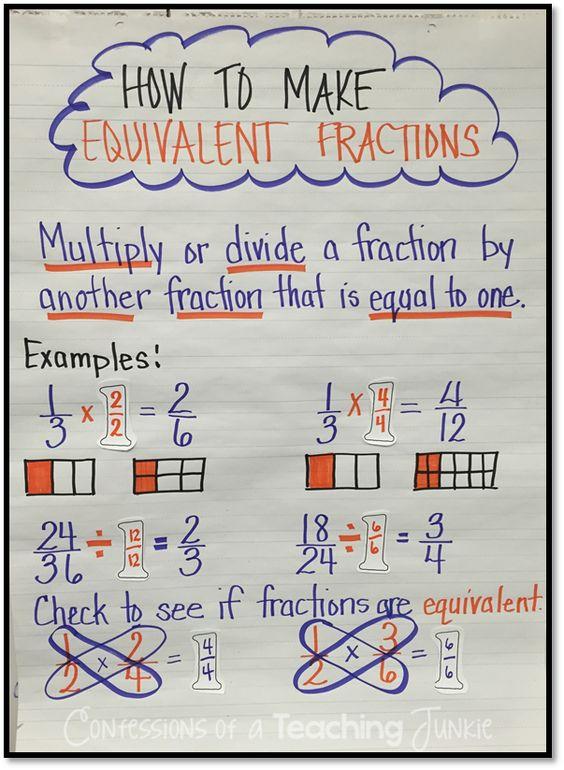A half equals two quarters equals four quarters equals four eights…
Wouldn’t it be easier to use numerals to represent these relationships between fractions? Even better, what about using shapes or objects to do the same?
This is where using colorful and informative anchor charts showing equivalent fractions are useful.
In this post, I will indicate what you should include in an equivalent fractions anchor chart and give you some ideas about how to use them in your classroom. I have also curated 21 resources that you can use as inspiration to create your own charts.
Table of Contents
- What a good equivalent fractions anchor chart should include
- Equivalent Fractions Anchor Charts
- Other Equivalent Fractions Resources
- Thoughts to take away
What a good equivalent fractions anchor chart should include
This may sound obvious, but a good equivalent fractions anchor chart should show the relevant fractions very clearly. This can be done in a number of ways, using numerals, colors, pictures, graphics etc. The resources in this post use a combination of ways of presenting the fractions, all of which are useful.
The anchor chart should make use of color. Fractions are not always easy for a student to ‘see’, especially in the younger grades. Different factions written in different colors, or shapes colored in to represent the fractions makes it easier for the students to see the logic of what a fraction means.
A good anchor chart should also present the equivalencies in different ways. This can be as simple as using numerals and shapes. There are also more innovative ideas (as shown in the resources in this post), that include using fingers, pictures and objects from real life.
An effective technique to use in a good anchor chart is an image or idea that is unusual and which will hook the students. This can be a simple image (like the chart in this post that uses a pizza), or a creative idea, such as turning the work into a game based on equivalent fractions.
Equivalent Fractions Anchor Charts
Equivalent Fractions by C.C. Wright Elementary
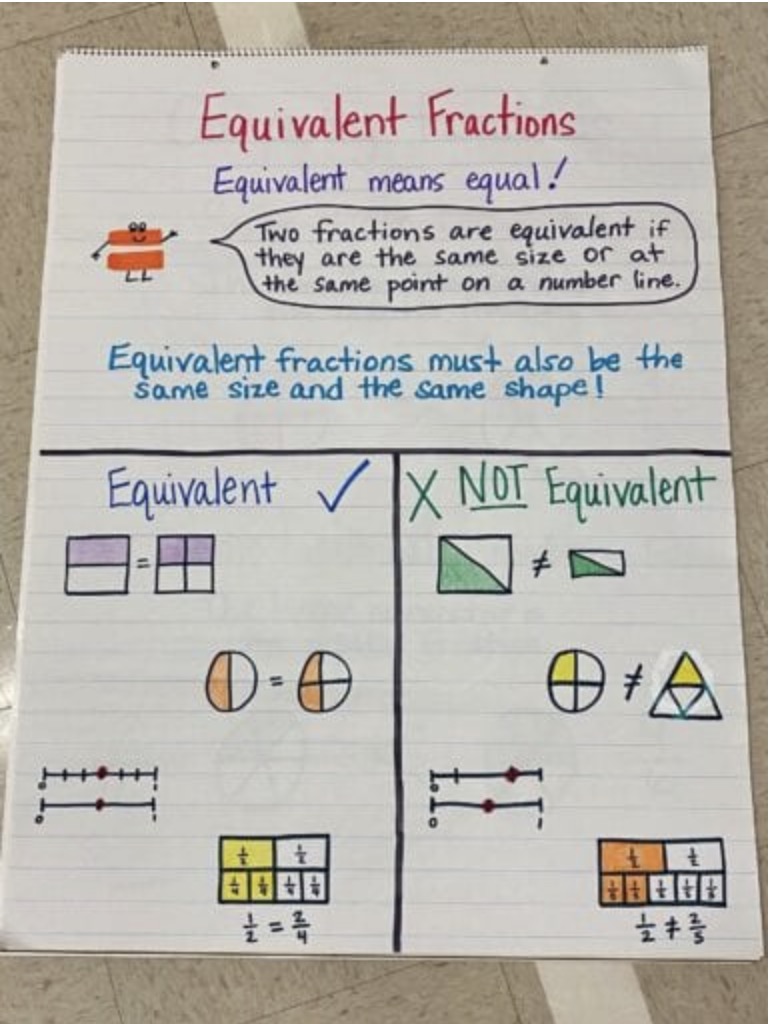
This simple resource tells the students that Equivalent means equal! gives me the impression of a story book. This is from the layout, colors and use of font. It is a great resource to demonstrate equivalent fractions for younger grades. They could have fun drawing and coloring in their own shapes and pictures to show the fractions.
Equivalent Fractions Anchor Chart by ashleigh education journey
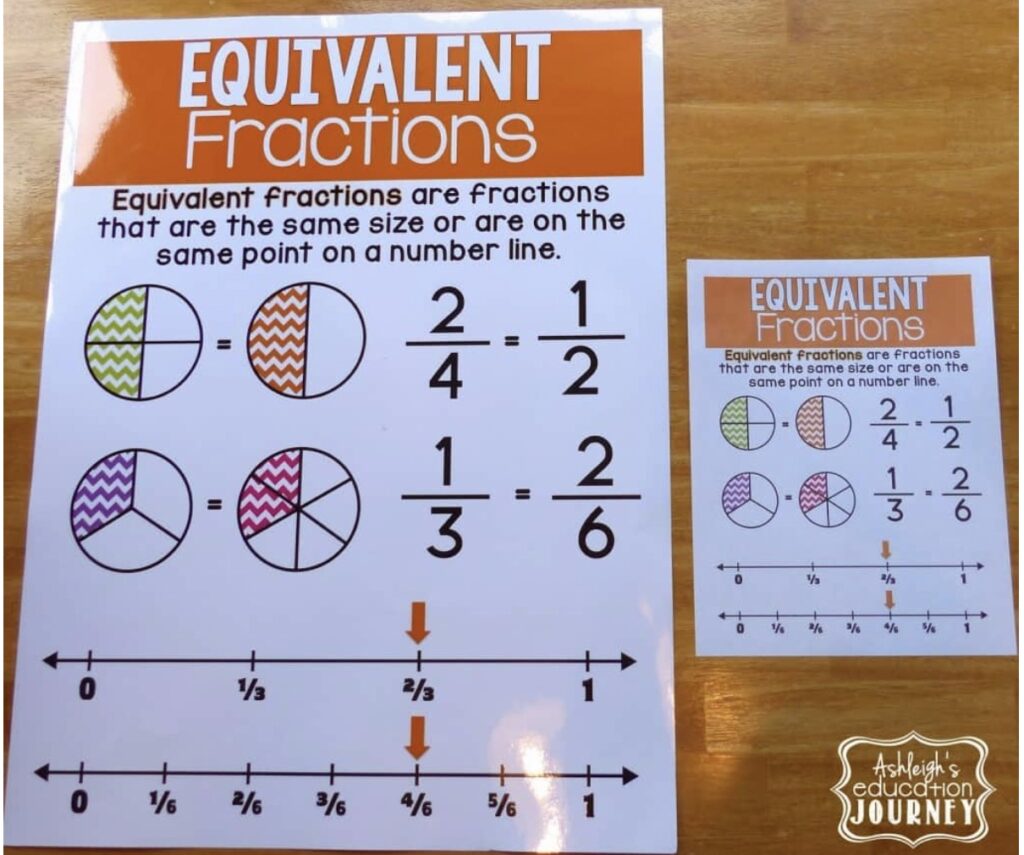
This equivalent fractions anchor chart has a relatively formal look to it, because of the layout, use of a printed font and colors. The relationship between pie examples and the position of the fractions on a number line is an interesting combination. It gives the students a different way of looking at equivalent fractions.
Fraction Models & Concept Chart
I like the phrase ‘…is the same as’ that stands out on this anchor chart. It uses a clear, big sized font to identify the fractions. The pictures add to this by using color to show the concept of thirds in different ways. You can create anchor charts in the same style, but use different basic fractions to explore the equivalents. A set of these anchor charts around your classroom would be a fantastic reference.
Fractions Table Chart
This bright chart of fractions makes a decorative and informative resource for your classroom. It’s interesting to see the different fractions in the context of others and how they become equivalent in some instances. Overall, it gives a clear picture of different fractions, by using the shapes and the colors. The equivalent fractions are easy to understand, because of the technique of using blocks and colors.
rainbow fraction anchor chart
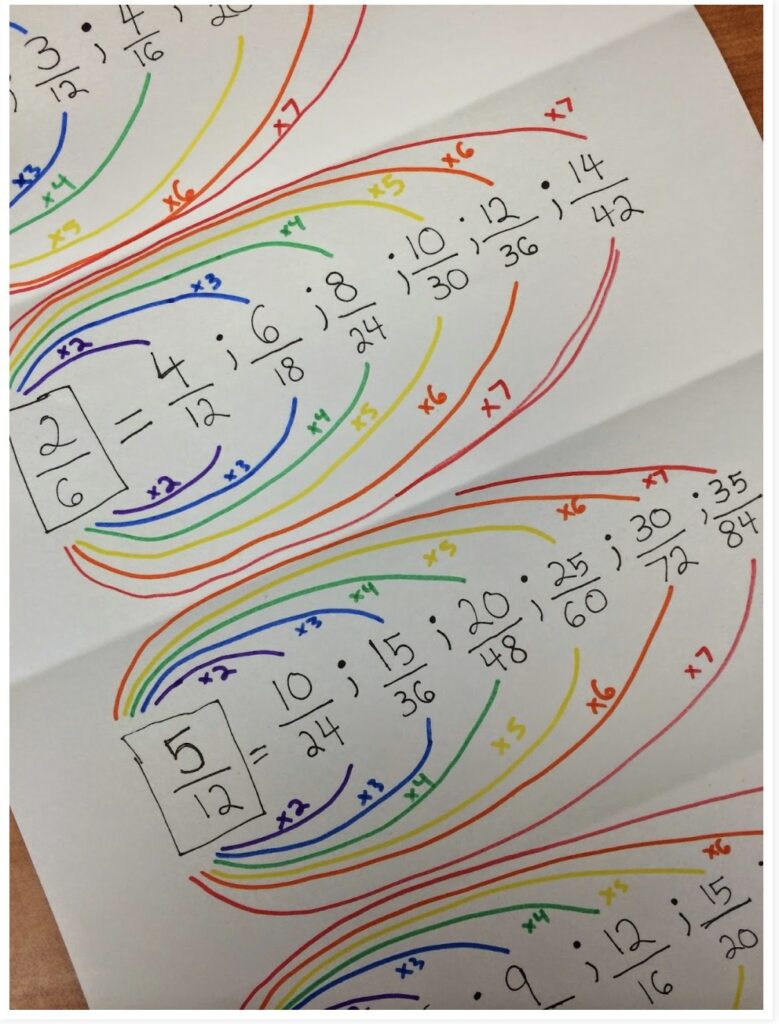
It’s the use of colors and shape in this rainbow fraction anchor chart that makes it interesting. You can use it as an inspiration for your own chart/s. I suggest writing the fractions on the chart and then making the links with the colors as you work with the students. This will keep the students involved and make sure they don’t get confused by the use of many lines. You could use the same technique, but simplify the content by using fewer fractions.
How to Make Equivalent Fractions Anchor Chart
This chart shows the students How to Make Equivalent Fractions. It indicates a specific way of working out fractions that are equivalent. You can work on these with the students to create a chart. The use of color makes sure the students will follow the key ideas. It would also be a great reference for students to work from when they create their own charts, or work on worksheets.
Equivalent Fractions Poster
This Equivalent Fractions Chart by For Love Of Cupcakes, is a valuable educational resource for teaching fractions in 3rd and 4th grade math. It features a visually engaging poster that simplifies the concept of equivalent fractions, making it easier for students to grasp. This tool is perfect for educators seeking effective methods to enhance their math instruction.
Paper Cut Fraction Anchor Chart
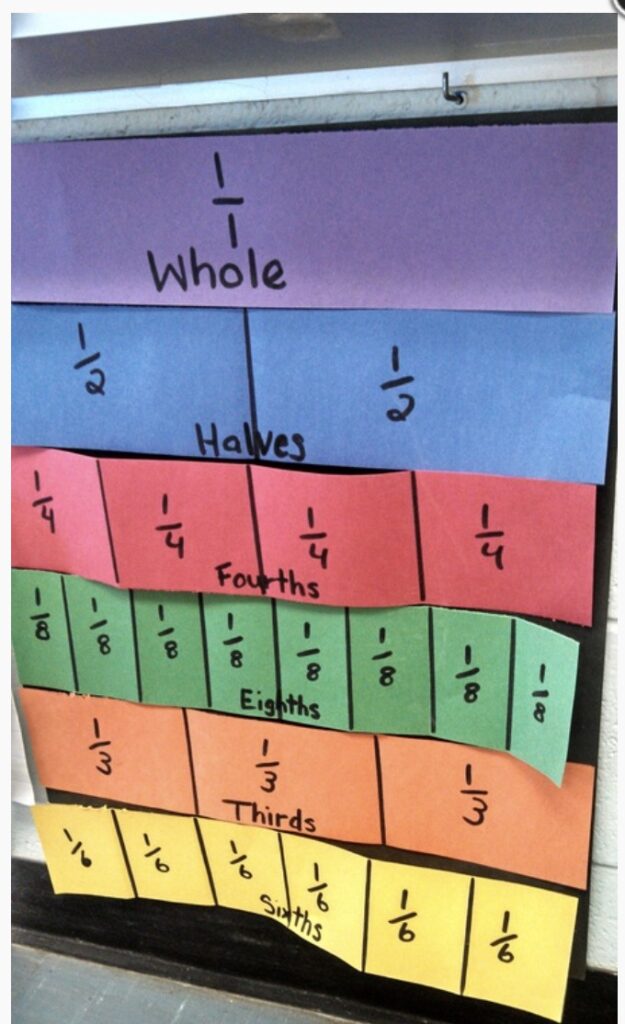
This Anchor chart is a great example of an educational resource designed to simplify the teaching of fractions.
Equivalent Fractions by First Grade Wolfs
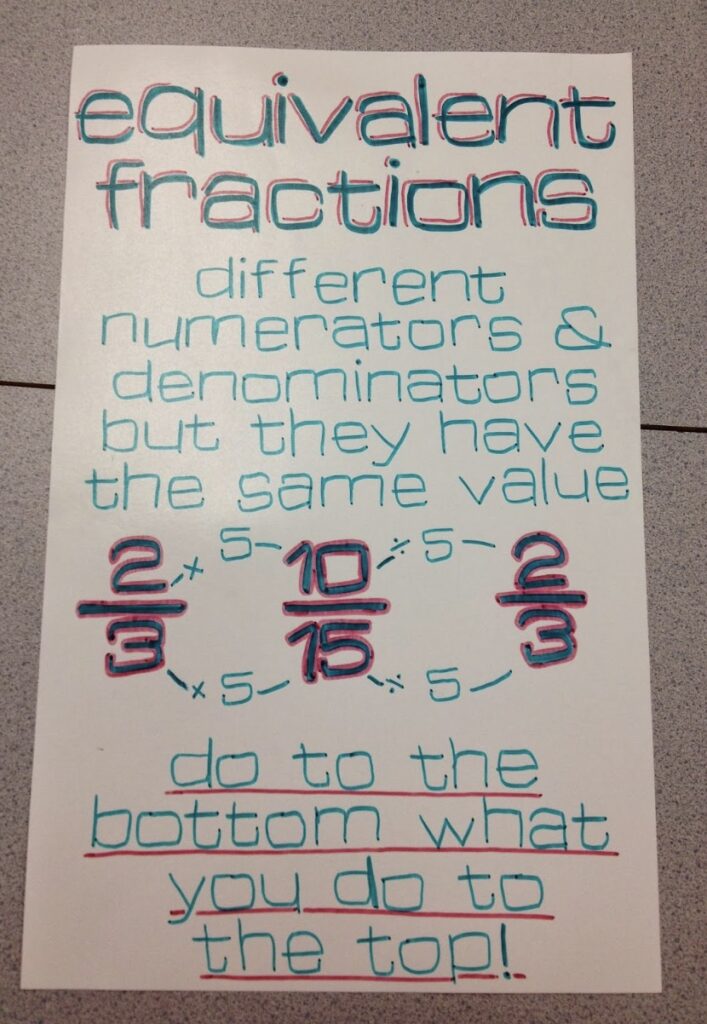
This Equivalent Fractions Anchor Chart is an educational resource that provides a great visual aid for teaching the equivalent fraction concept of “do to the bottom what you do to the top”. It’s a simple easy-to-understand anchor chart that is ideal for educators seeking effective methods to teach the concept of equivalent fractions in a visually engaging manner.
Other Equivalent Fractions Resources
Fractions Thirds Worksheet
This sheet on Fractions – Thirds is aimed at grades 2 – 4.
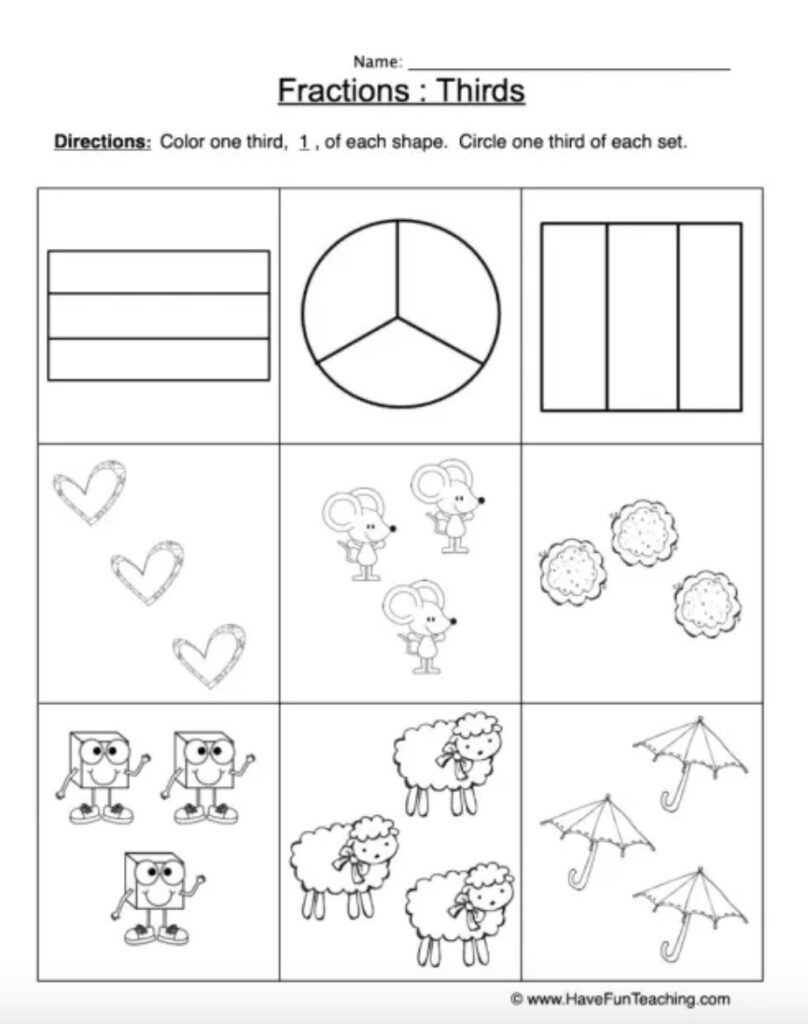
It is designed as a worksheet, but you can easily adapt it into an anchor chart. Give the students identical worksheets and guide them to color one third of each picture in the same color.
Equivalent Fractions ‘Spoons’ Game
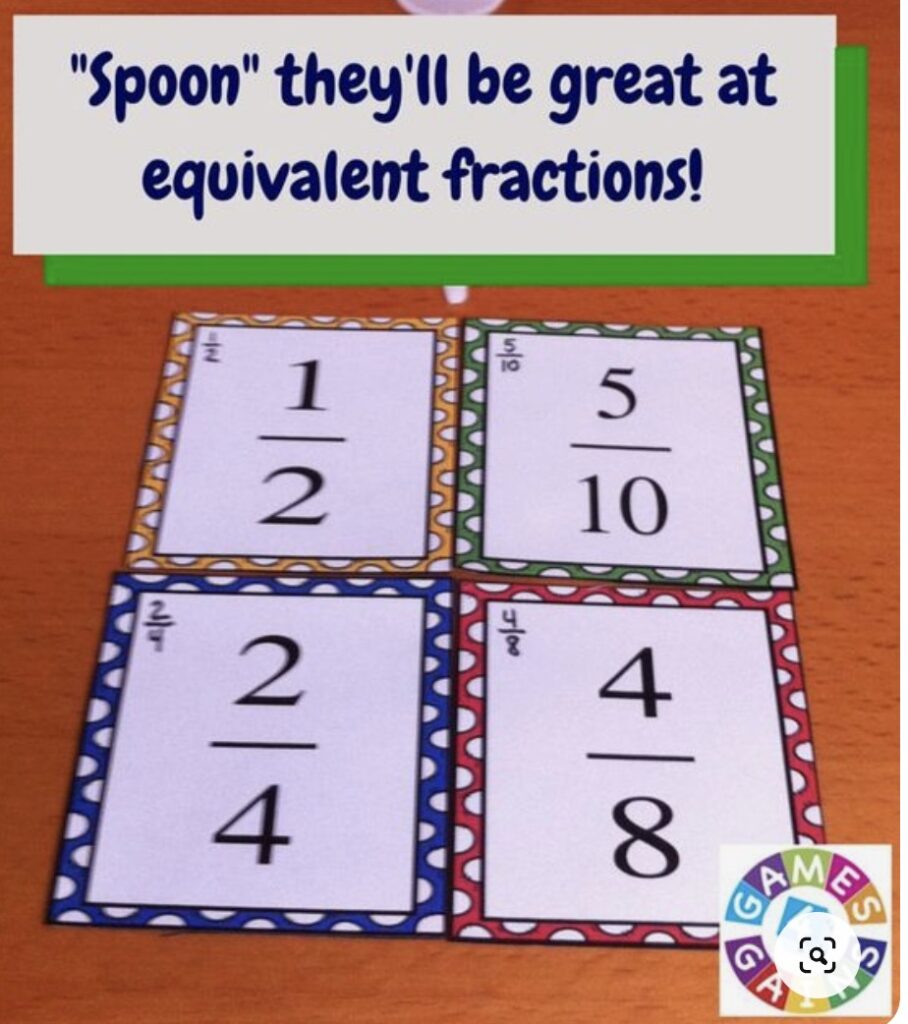
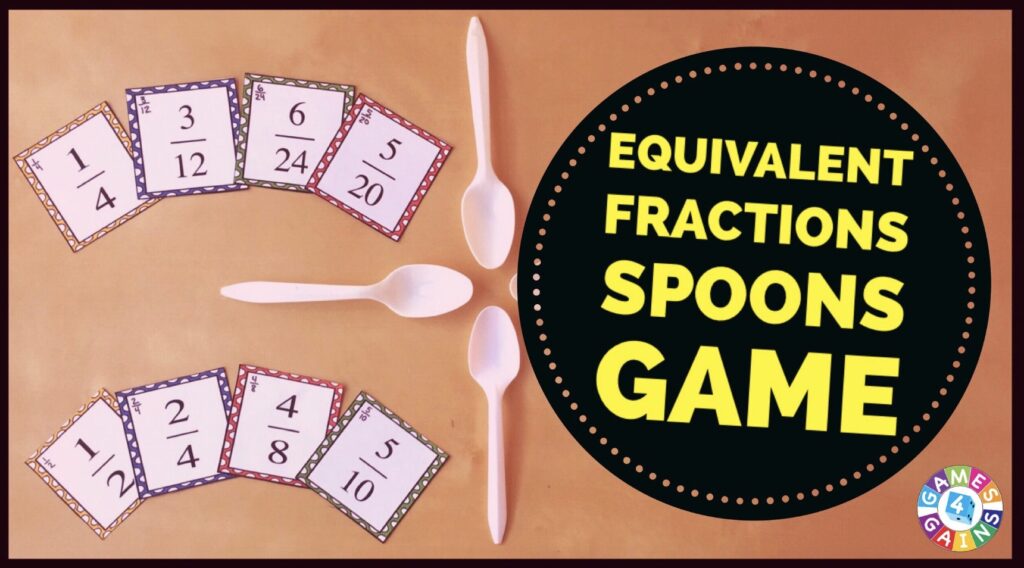
This anchor chart on its own makes the idea of equivalent fractions quite clear. Then, the idea of playing a special spin on the spoons game seems like a fun way to do fractions. Children learn through play and this is the perfect way for your students to learn all about equivalent fractions. It could also be a fun way for higher grades to revise them.
Fractions Half Third Fourth Worksheet
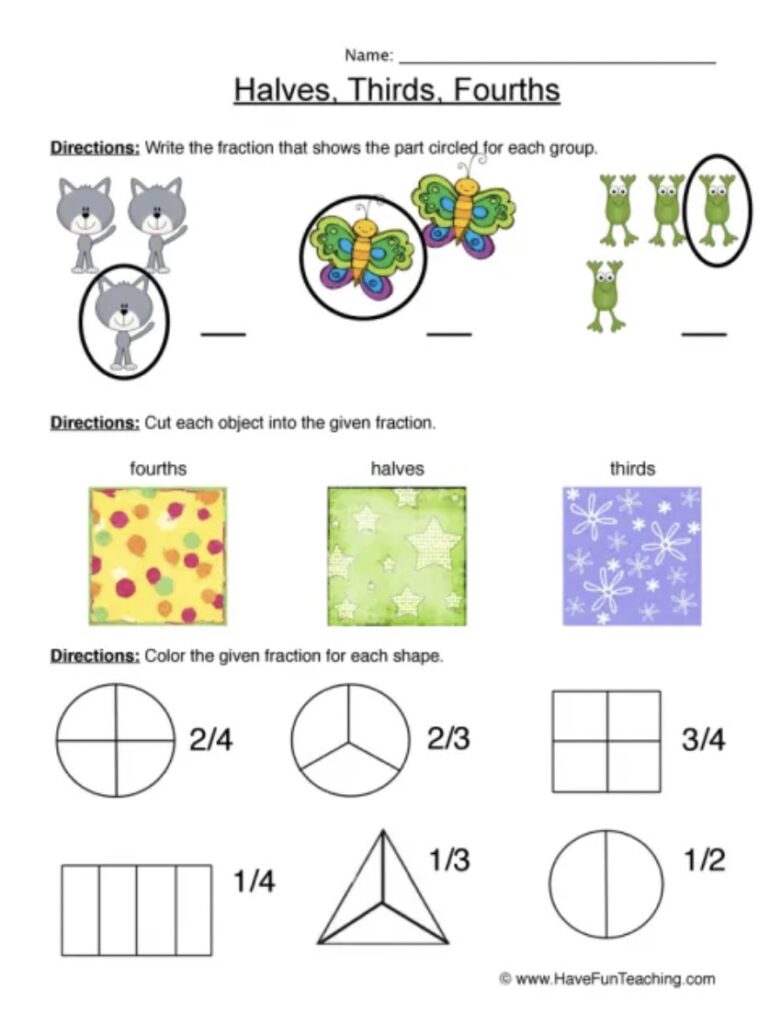
This resource is a worksheet on Halves, Thirds, Fourths, which can be adapted into an anchor chart. I suggest removing the instructions and giving the students a worksheet with only the illustrations. They can then color the fractions and fill in the relevant labels.
Fraction Escape game
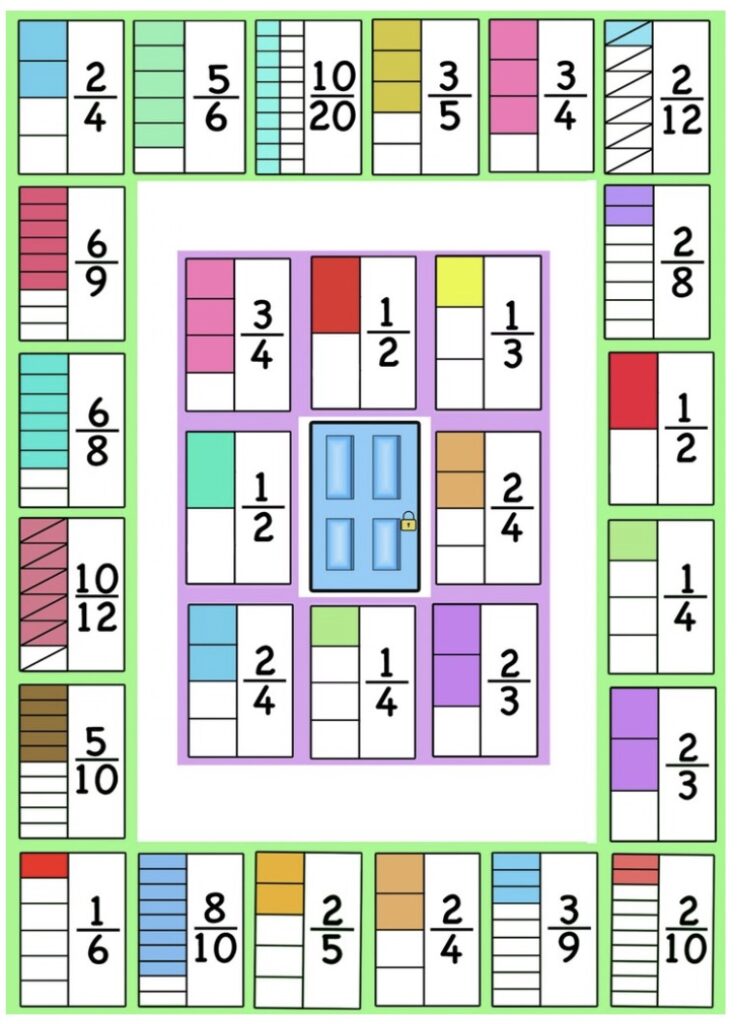
This chart is set up as a fraction escape game. The students can play a game, but this is also a colorful and useful presentation of different equivalent fractions. You can use it as an anchor chart that the students can follow to create their own resources on equivalent fractions. It would also make a great reference for worksheets on equivalent fractions.
Real World Examples For Teaching Fractions on a Number Line
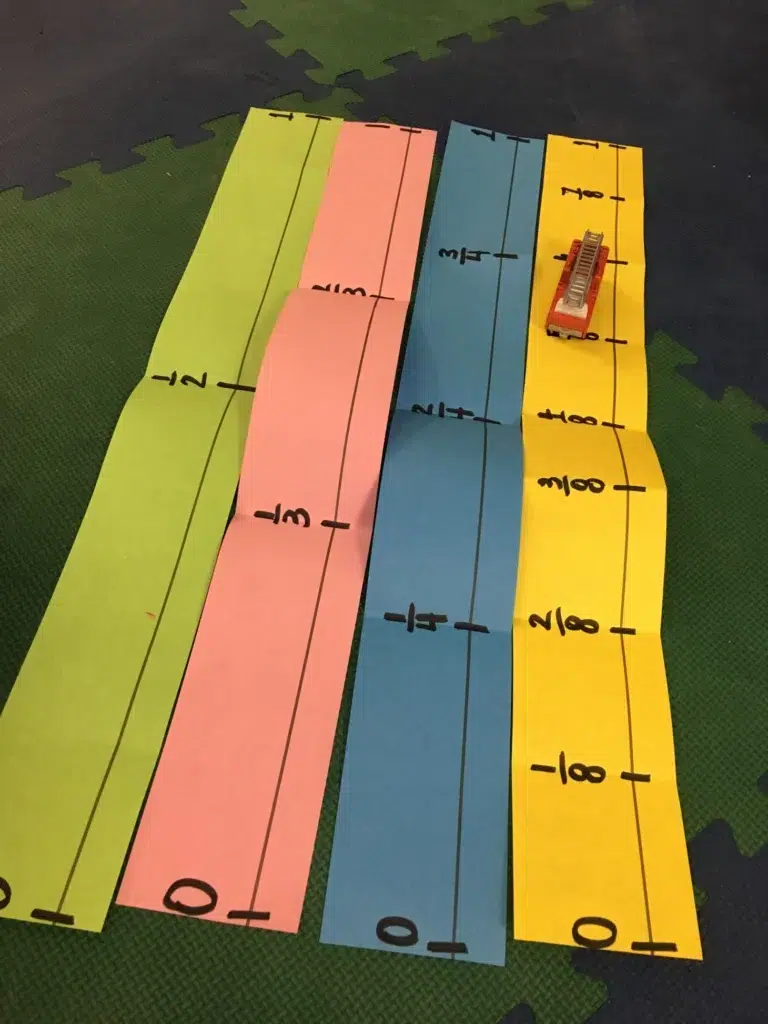
As it is set up, this resource is a set of number lines in the form of strips that indicate fractions. With just a little bit of imagination, you can take the same idea and form an anchor chart. It should feature strips in different colors that then indicate the relative fractions. Use this as a reference for an interactive activity. The students can work with the actual strips to investigate equivalent fractions.
Halves, Thirds, Fourths Fractions Worksheet
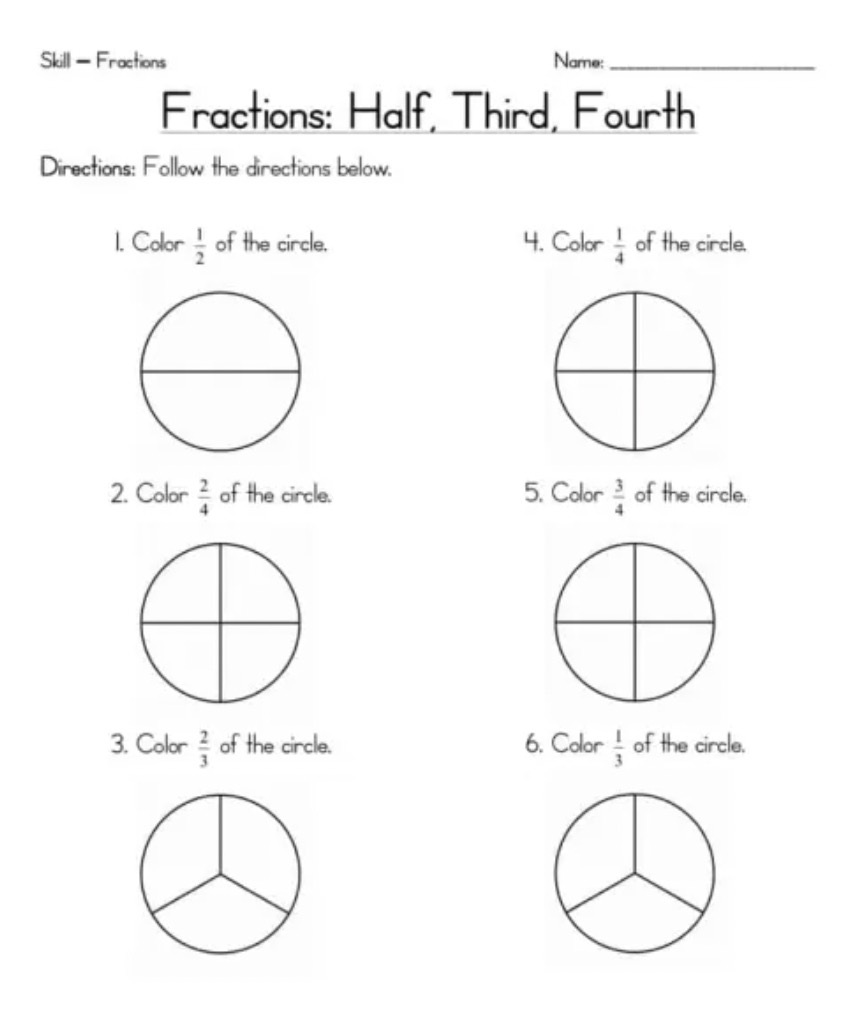
This is a more formal presentation of Fractions: Half, Third, Fourth. Again, give the students identical worksheets, without the instructions. You can work on the anchor chart while they work on their worksheets to color the sections of the shapes.
Fractions Tenth Worksheet
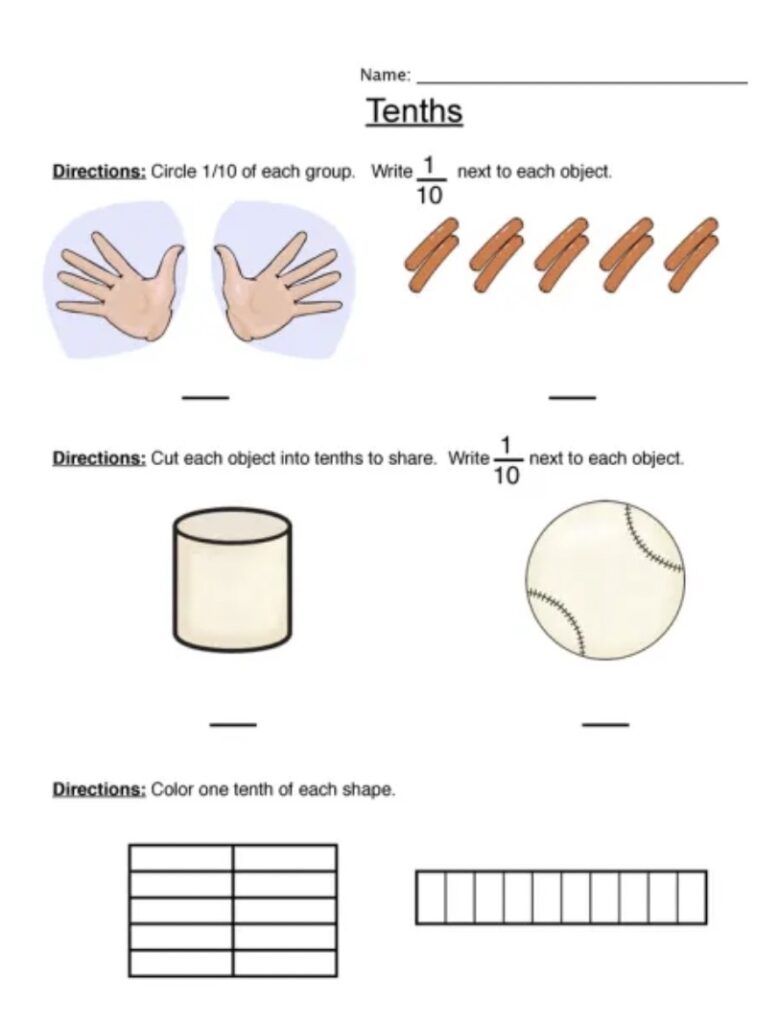
This worksheet on tenths is an interesting presentation of the fractions. Most of the images are different from other worksheets. The second activity is a little challenging for younger grades. Use this as the example anchor chart, from which the students can work.
Chocolate Bar Fractions



The image on this Chocolate bar chart is sure to grab the students’ attention. Using something so familiar to students to work on fractions is a great strategy. You can work with real chocolate bars (possibly ultimately as a reward) and guide the students to divide them up into equivalent sections to teach equivalent fractions.
Thoughts to take away
Equivalent fractions can be a bit confusing for students, especially in the lower grades. Using anchor charts can make it easier for them, especially when the charts feature color and shapes to represent the fractions. These can be the perfect starting point for interactive activities through which the students will come to understand equivalent fractions better.

